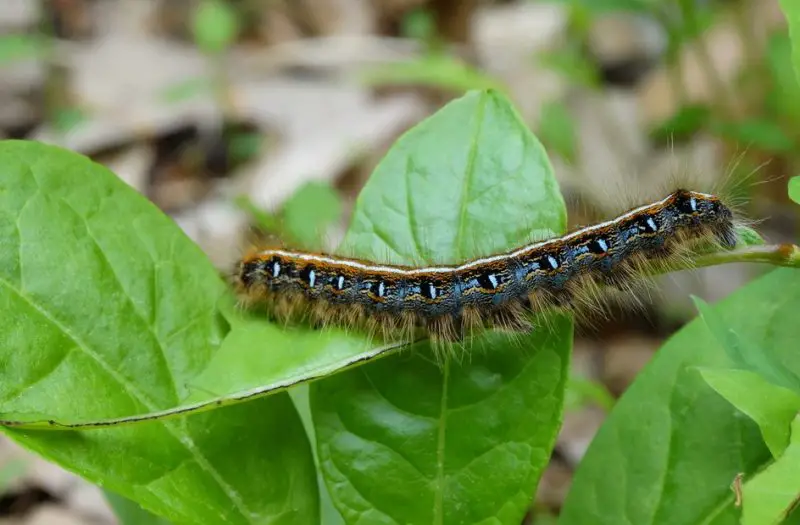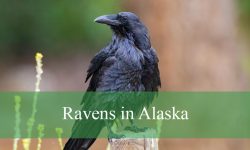Tent caterpillars are a common pest known for forming silky nests in the branches of trees, particularly in spring. These caterpillars can cause significant defoliation, weakening trees and making them more susceptible to disease.
In this comprehensive guide, we will explore how to identify tent caterpillars, understand their life cycle, and effectively control their population to protect your trees and garden.
What Are Tent Caterpillars?

Tent caterpillars are the larvae of moths belonging to the genus Malacosoma. They are known for creating silky, web-like nests (or tents) in the branches of trees, particularly in fruit trees and ornamental plants. These caterpillars are social insects, living in groups and feeding on tree leaves, which can cause defoliation and affect tree health.
Types of Tent Caterpillars
There are several species of tent caterpillars, but the most common include:
- Eastern Tent Caterpillar (Malacosoma americanum): Found in North America, these caterpillars are known for their distinctive white stripe down their backs.
- Forest Tent Caterpillar (Malacosoma disstria): Despite the name, they do not build tents but form silk mats on tree trunks. They have keyhole-shaped markings on their backs.
- Western Tent Caterpillar (Malacosoma californicum): Found in western North America, these caterpillars have blue and orange patterns along their bodies.
Life Cycle of Tent Caterpillars
Understanding the life cycle of tent caterpillars is crucial for effective control. They go through four main stages: egg, larva (caterpillar), pupa (cocoon), and adult (moth).
Egg Stage
Tent caterpillars lay eggs in late summer or early fall. The eggs are laid in clusters around small branches and are covered with a shiny, varnish-like substance to protect them through winter. Each egg mass can contain several hundred eggs.
Larva (Caterpillar) Stage
Eggs hatch in early spring when leaves begin to bud. The larvae immediately start feeding on the leaves and create web-like tents in tree branches for protection. This is the most damaging stage as they consume large quantities of leaves.
Pupa (Cocoon) Stage
After several weeks of feeding, the caterpillars leave the tents and form cocoons in secluded areas, such as under bark or in leaf litter. They pupate for about two weeks.
Adult (Moth) Stage
Adult moths emerge in late spring or early summer. They are light brown and nocturnal. After mating, females lay eggs, completing the cycle.
How to Identify Tent Caterpillars
Correct identification is crucial for effective control of tent caterpillars. By knowing what to look for, you can take early action and prevent significant damage to your trees. Identification involves observing their physical appearance, tent characteristics, and signs of infestation.
Physical Appearance
Tent caterpillars have distinctive features that vary slightly depending on the species. Here’s how to identify the most common types:
Eastern Tent Caterpillar (Malacosoma americanum)
Eastern tent caterpillars are among the most recognizable due to their distinct coloring and patterns. They have:
Black Body: Their body is predominantly black with a velvety texture.
White Stripe: A solid white stripe runs down the center of their back from head to tail. This stripe is continuous and contrasts sharply against the dark body.
Blue Spots and Yellow-Brown Hairs: Along the sides of their bodies, they have blue oval spots and fine yellow-brown hairs. These hairs are harmless to humans but give them a slightly fuzzy appearance.
Head and Legs: The head is black and shiny, and they have six small, segmented legs near the front of their bodies.
These caterpillars grow up to 2 inches long and are commonly found on cherry, apple, and other fruit trees.
Forest Tent Caterpillar (Malacosoma disstria)
Despite their name, forest tent caterpillars do not form traditional silk tents but create silk mats on tree trunks and branches. They can be identified by:
Blue Body: Their body is blue or bluish-gray.
White Keyhole-Shaped Markings: They have distinctive white, keyhole-shaped spots running down the center of their back. These markings are spaced evenly along the body.
Fine Hairs: Although covered in fine hairs, they are not as fuzzy as Eastern tent caterpillars.
Head and Legs: Their head is blue-black with faint markings, and their legs are black.
Forest tent caterpillars are commonly found on oak, maple, and aspen trees. Unlike other species, they form silk mats instead of web-like tents.
Western Tent Caterpillar (Malacosoma californicum)
Western tent caterpillars are known for their vibrant colors and patterns. They are characterized by:
Blue and Orange Patterns: They have a bluish body with striking orange or yellow patterns along their sides.
Black Spots and Fine Hairs: Black spots run along the back, and they are covered in fine, short hairs, giving them a slightly hairy appearance.
Head and Legs: Their head is black or dark brown with light markings. Their legs are black.
These caterpillars are common in western North America and prefer fruit trees, including cherry, apple, and plum trees.
Tent Characteristics
Tent caterpillars are famous for the silky, web-like structures they build in the branches of trees. These tents serve as communal shelters where the caterpillars rest when not feeding. The characteristics of these tents can help you identify an infestation:
Location: Tents are typically found in the crotches of tree branches, where branches split off from the main trunk. Eastern and Western tent caterpillars are known for building these structures, while forest tent caterpillars do not create tents but lay down silk mats.
Appearance: The tents are silky and web-like, made from layers of silk threads. These structures are white and semi-transparent, often gleaming in sunlight.
Growth Pattern: As caterpillars continue to add silk, the tents grow larger over time. In heavy infestations, the tents can become massive, covering entire branches.
Seasonality: Tents are typically seen in early spring when caterpillars are most active. The caterpillars leave the tents during the day to feed and return at night for protection from predators.
These tents are not only unsightly but also indicate active feeding nearby, which can lead to significant defoliation.
Signs of Infestation
Tent caterpillars can be highly destructive, and recognizing the early signs of infestation is key to minimizing damage. Look for the following indicators:
Defoliation
One of the most obvious signs of a tent caterpillar infestation is defoliation, where large portions of a tree’s leaves are consumed. Key features include:
Appearance of Trees: Affected trees may appear thin or barren, particularly on branches near the tents.
Feeding Patterns: Caterpillars feed on young leaves, leaving behind only the midribs and veins. In severe cases, entire branches can be stripped bare.
Impact on Tree Health: While healthy trees can survive a single season of defoliation, repeated infestations can weaken the tree, making it more susceptible to disease and other pests.
Silk Tents
The presence of silk tents is the most distinctive sign of a tent caterpillar infestation. These tents are:
Highly Visible: Noticeable white webs in tree branches, especially in fruit trees such as cherry, apple, and crabapple.
Location on Trees: Usually built in the crotches of branches, these tents provide protection from predators and harsh weather.
Seasonal Indicator: They are most visible in early spring when the caterpillars are active and feeding.
Breaking open these tents can expose the caterpillars to natural predators, helping to control their population.
Caterpillar Droppings
Tent caterpillars produce frass (caterpillar droppings) as they feed, which is another clear sign of infestation. Key characteristics include:
Appearance: Small, black pellets resembling coarse ground pepper.
Location: Found on leaves, branches, and on the ground beneath infested trees. Accumulations of frass are most noticeable under heavily infested trees.
Frequency: As the caterpillars grow, they consume more leaves and produce larger amounts of frass.
While frass itself does not harm trees, its presence confirms active feeding and infestation.
Why Accurate Identification Matters
Accurate identification of tent caterpillars is essential for effective control because:
Targeted Treatment: Different species may require slightly different control methods or timing for treatments.
Prevention of Misidentification: Tent caterpillars are sometimes confused with gypsy moths or fall webworms, which require different control strategies.
Timely Intervention: Early identification allows for intervention before severe defoliation occurs, minimizing the impact on tree health.
Impact of Tent Caterpillars on Trees
Defoliation and Stress
While healthy trees can survive one season of defoliation, repeated infestations weaken trees, making them vulnerable to disease, drought, and other pests.
Reduced Fruit Production
For fruit trees, heavy infestations can lead to reduced fruit yields and lower fruit quality.
Aesthetic Damage
Silk tents and defoliated branches affect the appearance of ornamental trees, reducing their landscape value.
Tent Caterpillars Identification and Control Tips
Manual Removal
- Prune Infested Branches: Cut off branches containing egg masses or silk tents. Dispose of them away from the garden to prevent re-infestation.
- Destroy Tents: Use a stick or broom to break open the tents, exposing the caterpillars to predators like birds.
- Handpick Caterpillars: For smaller infestations, manually remove caterpillars and drop them into soapy water to kill them.
Biological Control
- Natural Predators: Encourage birds, spiders, and beneficial insects like parasitic wasps to prey on tent caterpillars.
- Bacillus thuringiensis (Bt): A naturally occurring bacteria that is safe for humans and pets but toxic to caterpillars. Apply it to leaves where caterpillars are feeding.
Chemical Control
- Insecticides: Use insecticides containing spinosad or permethrin. Apply in early spring before tents become too large.
- Horticultural Oils: Spray dormant oils on egg masses in late winter or early spring to prevent hatching.
Cultural Practices
- Tree Maintenance: Keep trees healthy through proper watering, fertilization, and pruning to reduce stress and increase resilience against infestations.
- Remove Egg Masses: Scrape off egg masses from branches during winter to reduce the number of caterpillars in spring.
- Avoid Outdoor Lights: Adult moths are attracted to lights. Minimizing outdoor lighting can help reduce egg-laying near trees.
Preventing Tent Caterpillar Infestations
Regular Inspections
- Inspect trees in late winter and early spring for egg masses.
- Check for silk tents and caterpillar activity during early spring.
Attracting Natural Predators
- Plant native flowers to attract beneficial insects.
- Install birdhouses to encourage birds that feed on caterpillars.
Companion Planting
- Planting strong-scented herbs like lavender, sage, and peppermint can help deter tent caterpillars.
When to Call a Professional
While DIY methods are effective for small infestations, large-scale outbreaks may require professional intervention. Contact a licensed pest control service if:
- The infestation is extensive and beyond control with manual or biological methods.
- Trees are severely defoliated, leading to reduced health or increased vulnerability to disease.
- You are uncertain about using chemical insecticides safely and effectively.
Frequently Asked Questions
Are Tent Caterpillars Harmful to Humans?
No, tent caterpillars are not harmful to humans or pets. They do not sting or bite. However, some people may have allergic reactions to the fine hairs on their bodies.
Can Trees Recover from Tent Caterpillar Damage?
Healthy, mature trees usually recover from one season of defoliation. However, repeated infestations can weaken trees, making them more susceptible to disease and environmental stress.
Should I Burn the Tents to Get Rid of Them?
No, burning tents is not recommended as it can damage the tree branches and poses a fire hazard. Instead, remove or break open the tents to expose caterpillars to natural predators.
Conclusion
Tent caterpillars can cause significant damage to trees, but with proper identification and control methods, you can protect your garden and maintain healthy trees. Regular inspections and early intervention are key to preventing severe infestations. If you encounter a large outbreak, don’t hesitate to seek professional help to safeguard your landscape.
Stay proactive and keep your trees thriving by implementing the tips outlined in this guide.






